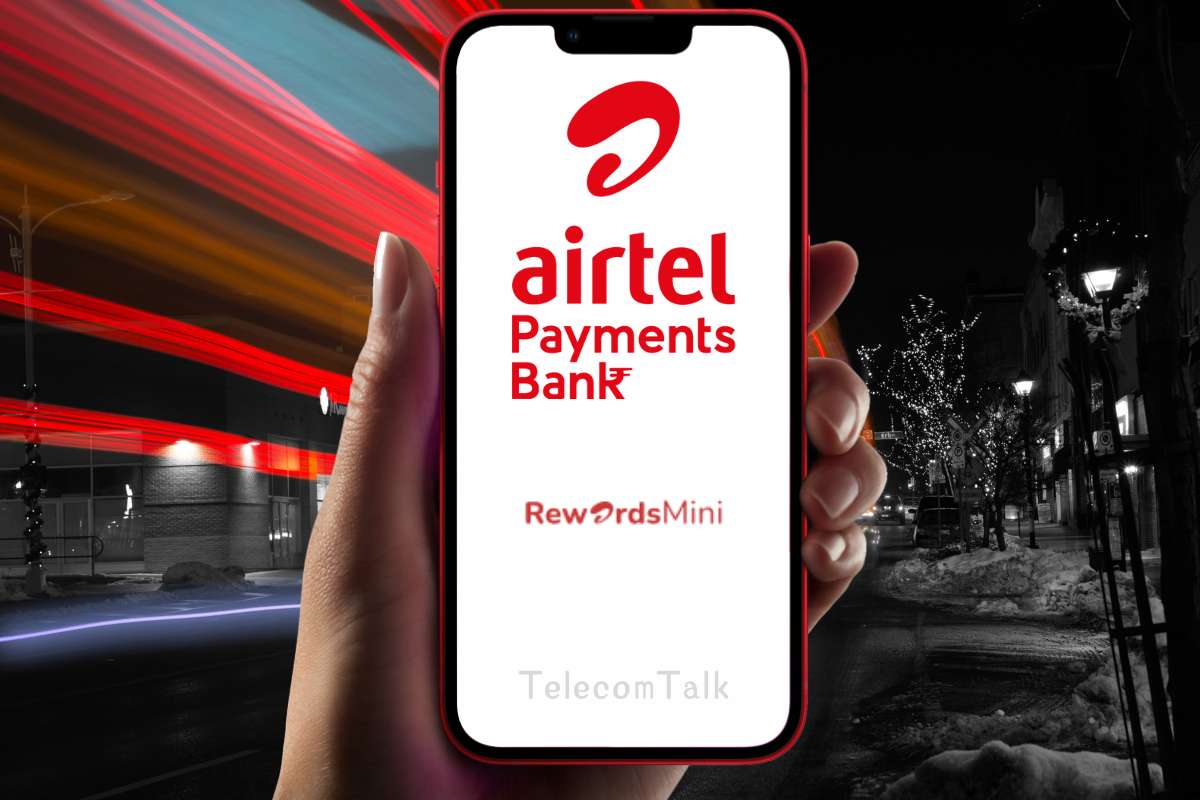India stands on the precipice of a significant challenge as cyber fraud continues its relentless ascent, threatening to impose economic losses that could exceed an alarming ₹20,000 crore in 2025. This escalating threat is marked by fraudsters adopting increasingly intricate and deceptive strategies, exploiting both established vulnerabilities and cutting-edge technologies. The financial sector, alongside digital payments, remains particularly exposed to a wave of sophisticated attacks.
Key Takeaways:
- India’s projected cyber fraud losses could surpass ₹20,000 crore in 2025.
- Fraudsters use brand impersonation, fake mobile apps, and advanced deepfake scams.
- Brand abuse alone is expected to cause ₹9,000 crore in losses.
- Fraudulent mobile apps, including those for KYC, investment, or rewards, are growing by 83% annually.
- Digital financial frauds led to over ₹4,245 crore in losses between April 2024 and January 2025.
- “Digital arrest” scams involve fraudsters impersonating law enforcement via video calls to extort money.
- Deepfake technology and mobile malware like “Crocodilus” are deceiving individuals by impersonating trusted contacts.
- Common threats include phishing, business email compromise, tech support scams, and SIM-swapping.
- Safeguarding measures include verifying urgent calls, avoiding unknown links, enabling multi-factor authentication, and keeping software updated.
The Escalation of Cyber Fraud: A Grim Outlook The digital landscape in India, while driving growth and connectivity, has also become fertile ground for malicious actors. Mr. Sujit Patel, CEO & MD, SCS Tech India Pvt Ltd, points to a sharp rise in cyber fraud incidents, projecting monumental financial damage in the coming year. This surge is not merely an increase in volume but a fundamental shift in the complexity of attacks, moving beyond simple phishing attempts to highly choreographed digital assaults. The sheer scale of anticipated losses underscores the urgency for robust protective measures and heightened public awareness.
Sophisticated Tactics: From Impersonation to Deception Fraudsters are continuously refining their methods, making it increasingly difficult for individuals and organizations to discern legitimate communications from elaborate hoaxes. Brand impersonation has become a major avenue for exploitation, with criminals mimicking established companies to trick unsuspecting users. These fraudulent activities are projected to account for a substantial ₹9,000 crore in losses, highlighting the pervasive nature of this deception. They often involve fake websites, emails, or social media profiles designed to harvest sensitive user information or induce fraudulent transactions.
Further complicating the threat environment is the proliferation of fake mobile applications. These apps, disguised as legitimate KYC (Know Your Customer) platforms, lucrative investment schemes, or enticing reward programs, are designed with a single purpose: to steal data or money. Their alarming 83% year-on-year growth signals a significant shift in attack vectors, leveraging the ubiquitous presence of smartphones. Victims download these apps, unknowingly granting access to their personal details, banking information, or even control over their devices.
Targeting the Financial Sector: A Persistent Vulnerability The banking and digital payments ecosystem remains a primary and lucrative target for cybercriminals. This sector faces a constant barrage of attacks, including phishing campaigns, social engineering schemes, and malware intrusions. These methods aim to compromise credentials, bypass security protocols, and directly drain funds from accounts. Between April 2024 and January 2025, digital financial frauds collectively resulted in losses exceeding ₹4,245 crore, painting a stark picture of the ongoing battle to secure financial transactions.
Among the high-value investment scams, the deceptive “pig-butchering” technique stands out. This long-con fraud involves fraudsters building trust with victims over extended periods, often weeks or months, before coaxing them into investing in fraudulent schemes. The term “pig-butchering” refers to the process of “fattening up” the victim with false promises and fabricated returns before “slaughtering” them by absconding with their entire investment. These scams often employ fake investment platforms that show fabricated profits, lulling victims into a false sense of security and encouraging them to invest larger sums.
Emerging Threats: Digital Arrests and Deepfake Scams A particularly disturbing trend is the rise of “digital arrest” scams. In these scenarios, fraudsters impersonate law enforcement officials or other government authorities via video calls. They create a highly intimidating and urgent atmosphere, falsely accusing victims of crimes such as money laundering, drug trafficking, or sextortion. Under immense psychological pressure, victims are coerced into transferring funds to various accounts, ostensibly to “resolve” their fabricated legal issues. These scams leverage fear and authority to bypass rational judgment, leaving victims financially devastated and emotionally distressed.
Adding another layer of complexity to the cyber threat landscape is the misuse of deepfake technology. Deepfakes, which are AI-generated synthetic media, can convincingly mimic the voice and likeness of individuals. Fraudsters are deploying this technology to impersonate trusted contacts – family members, friends, or colleagues – to deceive victims. This makes detection extremely challenging, as the visual and auditory cues that typically help identify a scam are expertly replicated. A common tactic involves a deepfake call from a “relative” claiming an emergency and requesting an urgent money transfer.
Mobile malware, such as “Crocodilus,” further exacerbates the threat by enabling impersonation and data theft directly from compromised devices. This type of malware can intercept communications, record audio, and capture screen content, providing fraudsters with the tools to meticulously craft their deceptions. The commercialization of threats and the ability of fraudsters to monetize their operations at scale mean that sectors beyond finance, including e-commerce and government services, are at heightened risk of compromise.
Expert Insights on Pervasive Threats Vijender Yadav, Founder and CEO of Accops, offers further clarity on the prevalent fraud types. Phishing emails and business email compromise (BEC) remain foundational threats, consistently aiming to steal credentials and divert substantial funds from organizations. These attacks often involve highly convincing emails that appear to originate from legitimate sources, tricking recipients into revealing sensitive information or making unauthorized transfers. The fact that “Phishing-as-a-Service” has become an organized cartel signifies a structured and widespread criminal enterprise dedicated to these activities. This “service” provides tools and infrastructure for less technically skilled criminals to launch sophisticated phishing campaigns.
Beyond these, Mr. Yadav reinforces the concern around “digital arrest” scams, emphasizing their use of psychological coercion tied to fabricated accusations of sextortion, sensitive data leakage, or drug trafficking. He also points to the alarming rise of AI-generated deepfake videos, alongside sophisticated SIM-swapping attacks. SIM-swapping involves criminals gaining control of a victim’s phone number by convincing mobile carriers to transfer it to a new SIM card under their control. This allows them to bypass SMS-based two-factor authentication, gaining access to bank accounts, email, and social media.
Tech support scams continue to exploit user trust and technical apprehension. Scammers typically contact victims, falsely claiming to be from reputable companies like Microsoft, Apple, or antivirus vendors. They insist the victim’s computer is infected and then manipulate them into granting remote access using software like Teamviewer or Anydesk. Once remote access is established, the scammers can install malicious software, steal data, or demand payments for “fixes” or “subscription renewals” via fake websites or untraceable gift cards.
Another subtle but dangerous vector involves compromised software updates. Fraudsters implant Trojans—malicious programs disguised as legitimate ones—within vendor patches and updates, particularly for browser plugins. When users install these seemingly harmless updates, the trojan gains access to their systems, creating backdoors for future exploitation. Finally, physical skimming devices or software on ATMs and POS machines are designed to clandestinely extract sensitive card information before the data can be tokenized, leading to unauthorized transactions.
Safeguarding Your Digital Life: Essential Measures Protecting oneself from the evolving landscape of cyber fraud requires vigilance and proactive measures. Both Mr. Sujit Patel and Mr. Vijender Yadav offer vital advice:
Verify Calls Claiming Urgency: Always exercise caution when receiving calls, especially those from individuals claiming to be “officials” or “relatives” demanding urgent action or money. Independent verification through official channels or trusted contacts is crucial. For instance, if a “bank official” calls, hang up and call your bank’s official helpline number directly.
Avoid Unknown Links and QR Codes: Phishing attempts frequently rely on users clicking malicious links or scanning compromised QR codes. These can lead to fake websites designed to steal credentials or directly download malware onto your device. Always scrutinize the sender’s email address or the URL before clicking.
Use Disposable Contacts for Untrusted Sites: When interacting with websites or services you do not fully trust, consider using a disposable email address or a secondary phone number. This limits the exposure of your primary contact information to potential data breaches or targeted scams.
Watch for Deepfake Cues: While deepfakes are sophisticated, they often exhibit subtle tells. These can include unnatural pauses in speech, a robotic or flat tone, flickering images, poor lip synchronization, or inconsistent lighting. If a video call or audio message feels “off,” it is wise to be suspicious.
Never Share Sensitive Details: Under no circumstances should you share personal identification documents (IDs), bank account details, credit card numbers, or one-time passwords (OTPs) with unsolicited callers or through unverified platforms. Legitimate organizations will never ask for such information over the phone or via email.
Enable Biometric-Based Multi-Factor Authentication (MFA): Adding layers of security, such as MFA that uses biometrics (fingerprint, facial recognition) or authenticator apps, significantly enhances protection. Even if a fraudster obtains your password, they cannot access your account without the second factor.
Verify Urgent Payment Requests via a Second Channel: If you receive an urgent request for payment, particularly from a business or a senior colleague, always verify it through a different, established communication channel. For example, call the sender on a known phone number rather than replying to the email.
Keep Devices Updated: Regularly update your operating systems, applications, and antivirus software. These updates often include critical security patches that address newly discovered vulnerabilities, preventing exploits.
Pause and Confirm Unsolicited Communications: If you receive an unsolicited call claiming legal action or a rushed email demanding money, take a moment to pause, think critically, and confirm the legitimacy of the request before responding or acting. Hasty decisions are often what fraudsters count on.
Install Reputable Antivirus Software: A robust antivirus solution acts as a first line of defense against malware, phishing sites, and other digital threats, providing real-time protection and scanning.
Stay Alert: Cultivate a habit of critical thinking before clicking on links, transferring funds, or sharing any sensitive information online. Your caution is your strongest defense against an evolving array of cyber threats.
The fight against cyber fraud is an ongoing one, demanding continuous adaptation from both individuals and organizations. By understanding the tactics employed by criminals and adopting robust safeguarding measures, the collective digital resilience of India can be strengthened, mitigating the projected financial impact and protecting countless citizens from falling victim to these insidious schemes.
Frequently Asked Questions (FAQ)
Q1: What is “pig-butchering” cyber fraud?
A1: “Pig-butchering” is a long-term investment scam where fraudsters build a trusting relationship with a victim over weeks or months. They then convince the victim to invest in a fake, high-return scheme, showing fabricated profits, before ultimately disappearing with all the invested money.
Q2: How do “digital arrest” scams work?
A2: In “digital arrest” scams, criminals impersonate law enforcement officials via video calls, falsely accusing victims of crimes like money laundering or drug trafficking. They then coerce victims under duress to transfer money to “resolve” the fabricated legal issues, exploiting fear and authority.
Q3: What are deepfakes, and how are they used in cyber fraud?
A3: Deepfakes are AI-generated videos or audio recordings that convincingly mimic a person’s appearance and voice. Fraudsters use them to impersonate trusted individuals (family, friends, colleagues) to trick victims into sharing sensitive information or making fraudulent payments.
Q4: How can I identify a phishing email or message?
A4: Look for suspicious sender addresses, generic greetings, urgent or threatening language, requests for personal information, and spelling or grammatical errors. Always hover over links to check the URL before clicking, and never open suspicious attachments.
Q5: Is it safe to use public Wi-Fi?
A5: Public Wi-Fi networks can be insecure, making your data vulnerable. Avoid accessing sensitive information like banking details or personal logins on public Wi-Fi. If you must use it, consider using a Virtual Private Network (VPN) for encryption.
Q6: What is SIM-swapping, and how can I protect myself?
A6: SIM-swapping is when a fraudster gains control of your phone number by tricking your mobile carrier into transferring it to their SIM card. This allows them to bypass SMS-based two-factor authentication. Protect yourself by using authenticator apps instead of SMS for MFA and being cautious of unexpected SIM card deactivations.
Q7: Why are software updates important for security?
A7: Software updates often include crucial security patches that fix vulnerabilities discovered in previous versions. Installing these updates promptly helps protect your devices from new exploits and malware that target those weaknesses.
Q8: What should I do if I suspect I’ve been a victim of cyber fraud?
A8: Immediately contact your bank or financial institution to report fraudulent transactions and block accounts. Change all affected passwords. Report the incident to the cybercrime unit of your local law enforcement agency. Document all details of the scam.


















